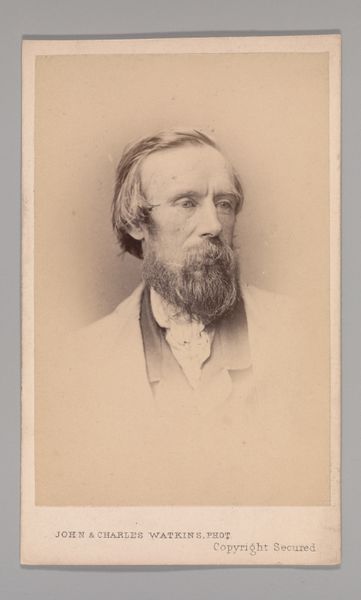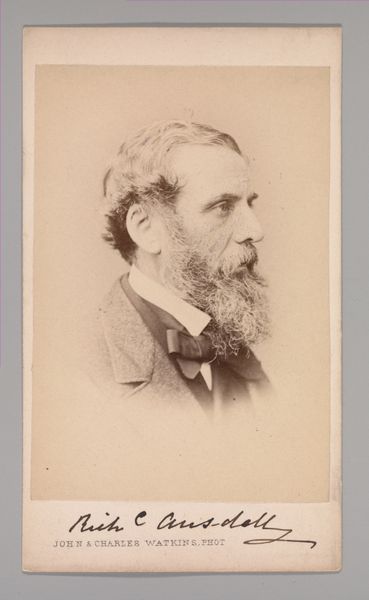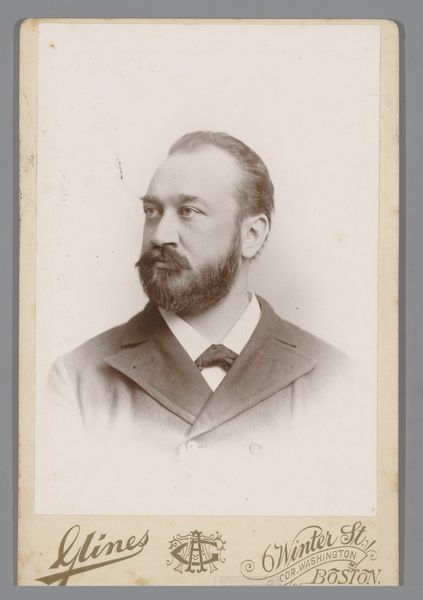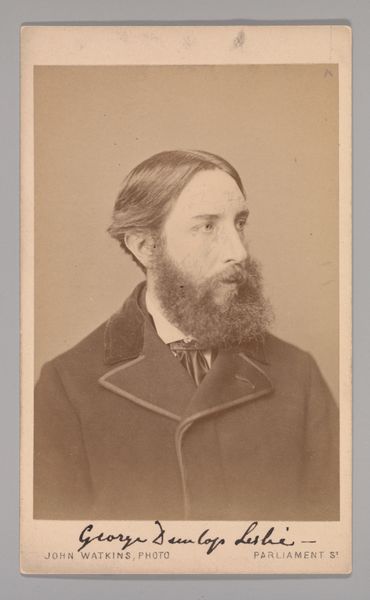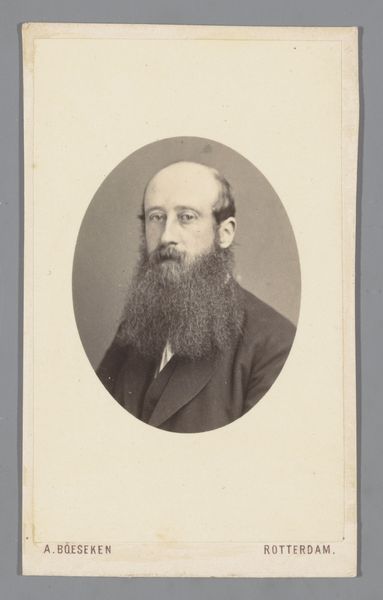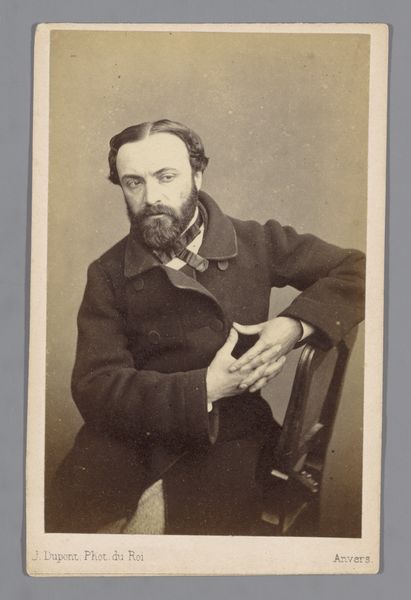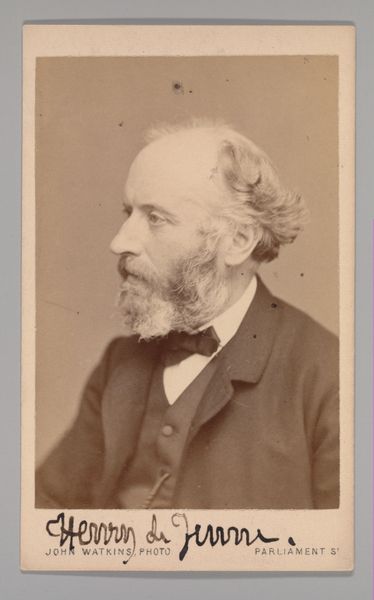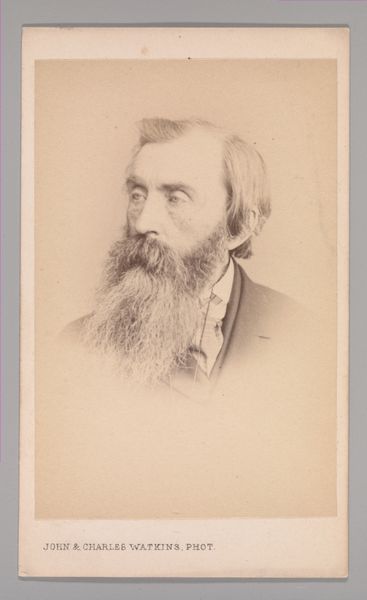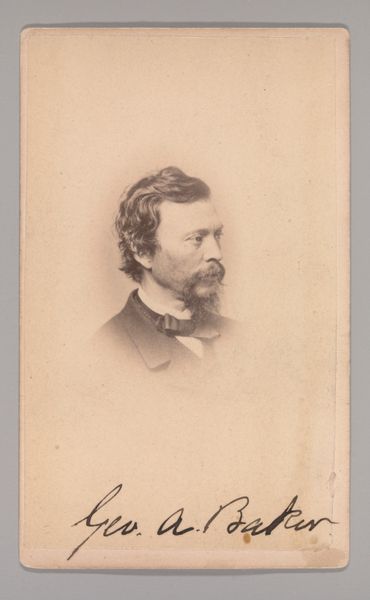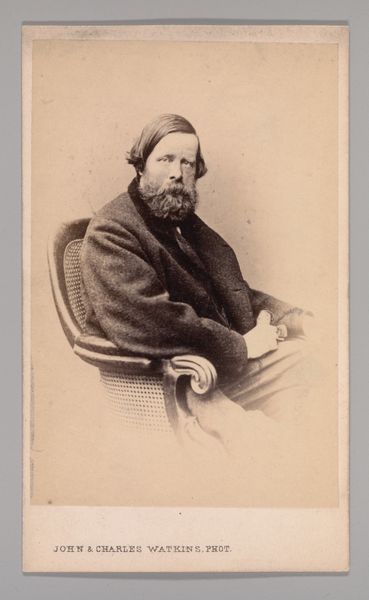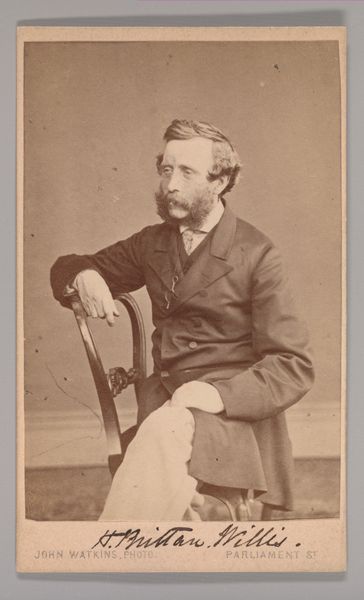![[Alfred Elmore] by John and Charles Watkins](/_next/image?url=https%3A%2F%2Fd2w8kbdekdi1gv.cloudfront.net%2FeyJidWNrZXQiOiAiYXJ0ZXJhLWltYWdlcy1idWNrZXQiLCAia2V5IjogImFydHdvcmtzLzY5ZWIwNzlkLWRjMDctNGU0My05MjEwLWNiYjQ4NzY0ZDQ1NC82OWViMDc5ZC1kYzA3LTRlNDMtOTIxMC1jYmI0ODc2NGQ0NTRfZnVsbC5qcGciLCAiZWRpdHMiOiB7InJlc2l6ZSI6IHsid2lkdGgiOiAxOTIwLCAiaGVpZ2h0IjogMTkyMCwgImZpdCI6ICJpbnNpZGUifX19&w=3840&q=75)
daguerreotype, c-print, photography, gelatin-silver-print
#
portrait
#
daguerreotype
#
c-print
#
photography
#
gelatin-silver-print
#
men
Dimensions: Approx. 10.2 x 6.3 cm (4 x 2 1/2 in.)
Copyright: Public Domain
Curator: What a fascinating study in light and shadow! Before us we have a portrait identified as Alfred Elmore, made in the 1860s by the photography firm John and Charles Watkins. It's a gelatin silver print, now residing here at the Metropolitan Museum of Art. Editor: The tonal range is exquisite! The way the sepia tones play across his face, really emphasizing the crags and contours. And there’s something wonderfully intimate about its small size; it feels like a private keepsake. Curator: Yes, its intimacy speaks volumes. These "carte de visite" portraits were extremely popular; their production reveals so much about the democratization of portraiture during the mid-19th century, facilitated by photographic advancements and new consumer practices. It was no longer just the aristocracy commissioning painted portraits. Editor: And yet, looking at the image purely as a visual object, note how his expression pulls the viewer in. The sitter projects such thoughtfulness, such gravitas, doesn't he? I see the sharp lines of his features tempered by the soft focus of the lens, a dance between reality and artistic interpretation. Curator: Consider, though, the labor involved. The Watkins studio likely operated with a division of labor, from camera operators to darkroom technicians, each contributing to the final product. Their work underscores the transformation of photography into a commercial enterprise, and reflects shifting cultural attitudes toward image-making. Editor: True, but back to the aesthetics - observe the gentleman’s carefully chosen attire—the dark suit, the subtly patterned waistcoat, all speaking to an effort in curating image as an element in a visual language. And the subtle highlight in his eyes - an indication of artful arrangement and control of studio lighting! Curator: I agree. He clearly presents himself in the most favorable light. And so much labor just for one shot, one print. The material reality is fascinating. I appreciate this object even more now. Editor: As do I, actually. Analyzing its aesthetic, material, and the conceptual composition really reveals how this single artifact manages to communicate so much across time.
Comments
No comments
Be the first to comment and join the conversation on the ultimate creative platform.
